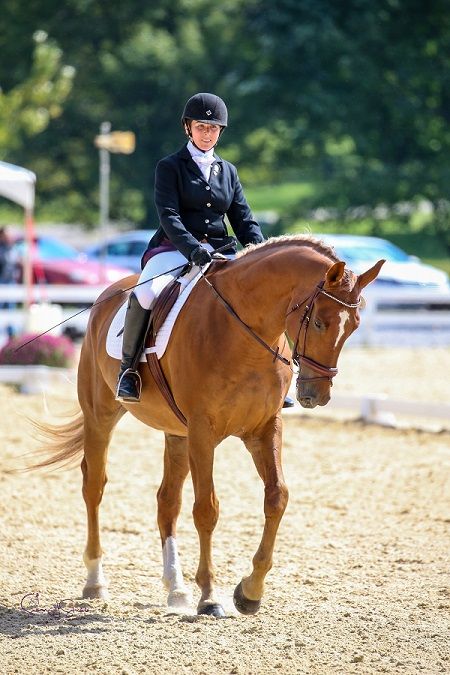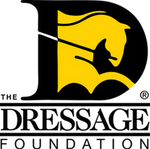Trip Harting Fund 2019 Recipient: Ariel Wyatt

Photo by Susan J. Strickle
Over the course of the summer and into fall, I had the privilege of being a participant in USDF L Education Program for Dressage Judges, hosted by Northeast Ohio Dressage Association. I have to thank The Dressage Foundation’s Trip Harting Fund for Pony Club Graduates for making this possible. When I entered the program, I planned to deepen my understanding and gain a broader perspective to become an advocate for correct riding, execution, and training through the discipline of dressage. These sessions were not only part of my licensure requirements, but education I would use to become a better participant in this discipline. The program exceeded my expectations. I learned a tremendous amount about how I would need to train my eye to see an even greater depth of technical accuracy in movements and gaits, and how to efficiently portray the most crucial information to riders and trainers. I also became more aware of certain aspects of my own riding and training. I would say that since the end of the final session in Part 1, I am even more driven to learn more and really challenge myself to become an exceptional dressage judge.
The first session of the L Program Part 1 provided us with a strong introduction to judging. The main focuses included an introduction to methodology, biomechanics of the horse, evaluating the basics, and the application of the training scale. Understanding the biomechanics really opens up the eye to a more accurate evaluation of the basics and the performance in front of you. We were able to view video clips that helped solidify concepts. We had the opportunity to comment on various aspects of the performance to build a discussion to further comprehension. I think many of us walked away realizing there is a lot to learn and build upon to strengthen our skills.
The second session built on the information that we took from the previous, diving into each of the levels and their defining movements. By looking at each level, we were able to establish the purpose which supports the training scale and the progression of correct training of the horse. Within each test, we then looked at movement criteria, essence of the movement, and directive ideas. All of these are factors in assigning a score and comment for the performed movement, which effectively addresses the most important aspect to aid the trainer/rider in progressing.
The final session primarily focused on addressing the collective marks and judging musical freestyles. The collective marks give an overall impression of the entire performance. The challenge was to ensure that the front and back of the test were comparable in overall total. We also gained a lot of experience judging actual horses during the final session to be able to apply what we had learned. Learning about the musical freestyles was also critical considering the scoring has quite a few differences and requires more organization/coordination with the scribe.
Overall the program was extremely thorough. I was extremely impressed with the program that USDF has developed for dressage judges in terms of lecture and video examples. I would highly recommend this program to anyone looking to broaden their perspective on dressage.
My goal now is to apply for Part 2 of the USDF L Education Program and continue to learn in the program. During the course of Part 1, I had already completed the majority of my scribing hours and had the opportunity to sit with an “S” judge. Each of those opportunities were extremely valuable to learn from experienced judges and absorb the language they used on the test sheets. I will continue to take these opportunities throughout 2020. Alongside the bookwork and seminars, I am also working with my own horse to prepare to show at 4th level to achieve the scores needed to proceed to my “r”.
